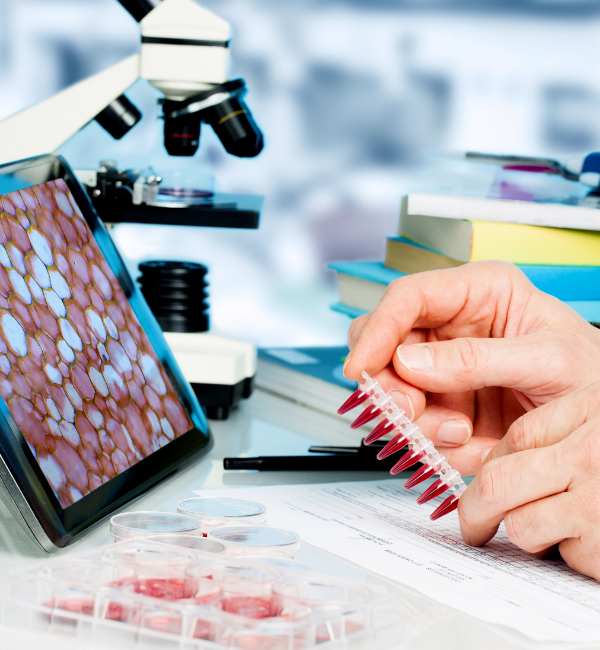Gel Electrophoresis of Biological Dyes


Learn how to complete a gel electophoresis and how it is used to separate different molecules in a sample!
Agarose gel electrophoresis can resolve molecules based on charge, size, and shape. In this laboratory you will use gel electrophoresis to separate molecules present in different dyes, and you will see some of the applications of electrophoresis.
What You Need
- Various dyes in microcentrifuge tubes: Labelled 1, 2, 3, 4, 5 and an unknown X.
- Pipettors and pipette tips to load dye samples into gel.
- Electrophoresis units and power supplies.
- 0.8% Agarose in 1x TAE melted.
- 1 clear plastic ruler.
Safety Notes
Students, educators and volunteers must wear appropriate personal protective equipment. Safety glasses are required. Be sure to follow all safety precautions for electrophoresis units and power supplies.
Safety instructions for students: One of the most important rules in science is safety first. All food and drink must be put away for this lab. You must wear your eye protection for the entire lab. Please wash your hands with soap and water when you are finished today.
What To Do
Procedure:
- Get your electrophoresis apparatus. Make sure the comb is in place. There should be 1 comb in the middle and stoppers (black casting dams) at both ends of the gel tray.
- Pour hot agarose into the gel space until it reaches the top of the gel casting tray. Let the agarose harden. This should take 5-10 minutes. Don't touch or move the gel until it is hard.
- When the agarose gel is hard, take out the stoppers and the com. Gently remove the comb and use a pipettor to load each dye into a separate well in the gel. Use a separate pipet tip for each sample to avoid contamination. Draw a diagram of the gel as you load the dyes to help you keep track of which sample went into which well.
- One the samples are loaded, pour TAE solution over your gel so that the gel casting tray is completely covered.
- Run the gel. Plug the electrodes into your gel box. Red to red, black to black, being careful not to bump your gel too much. Plug the power source into an outlet and set the voltage between 125V and 150V.
- Electrophorese samples for ~10 minutes. Turn off power supply, disconnect power cords from the chamber and remove the top of the electrophoresis chamber.
Discovery
Dyes move to the positive electrode if they are negatively charged, and to the negative electrode if they are positively charged - the old adage "opposites attract." They separate because they are different sizes dyes that move faster and farther from the wells are smaller - lower molecular weight.
Why did we use TAE in the gel electrophoresis set-up instead of water?
TAE is a solution made up of Tris base, Acetic acid and EDTA. It acts as a buffer during gel electrophoresis to maintain the pH and assists the separation of the DNA and RNA components in the sample.
What's Happening?
Dyes move to the positive electrode if they are negatively charged, and to the negative electrode if they are positively charged - the old adage "opposites attract." They separate because they are different sizes dyes that move faster and farther from the wells are smaller - lower molecular weight.
Investigate Further
Why did we use TAE in the gel electrophoresis set-up instead of water?
TAE is a solution made up of Tris base, Acetic acid and EDTA. It acts as a buffer during gel electrophoresis to maintain the pH and assists the separation of the DNA and RNA components in the sample.